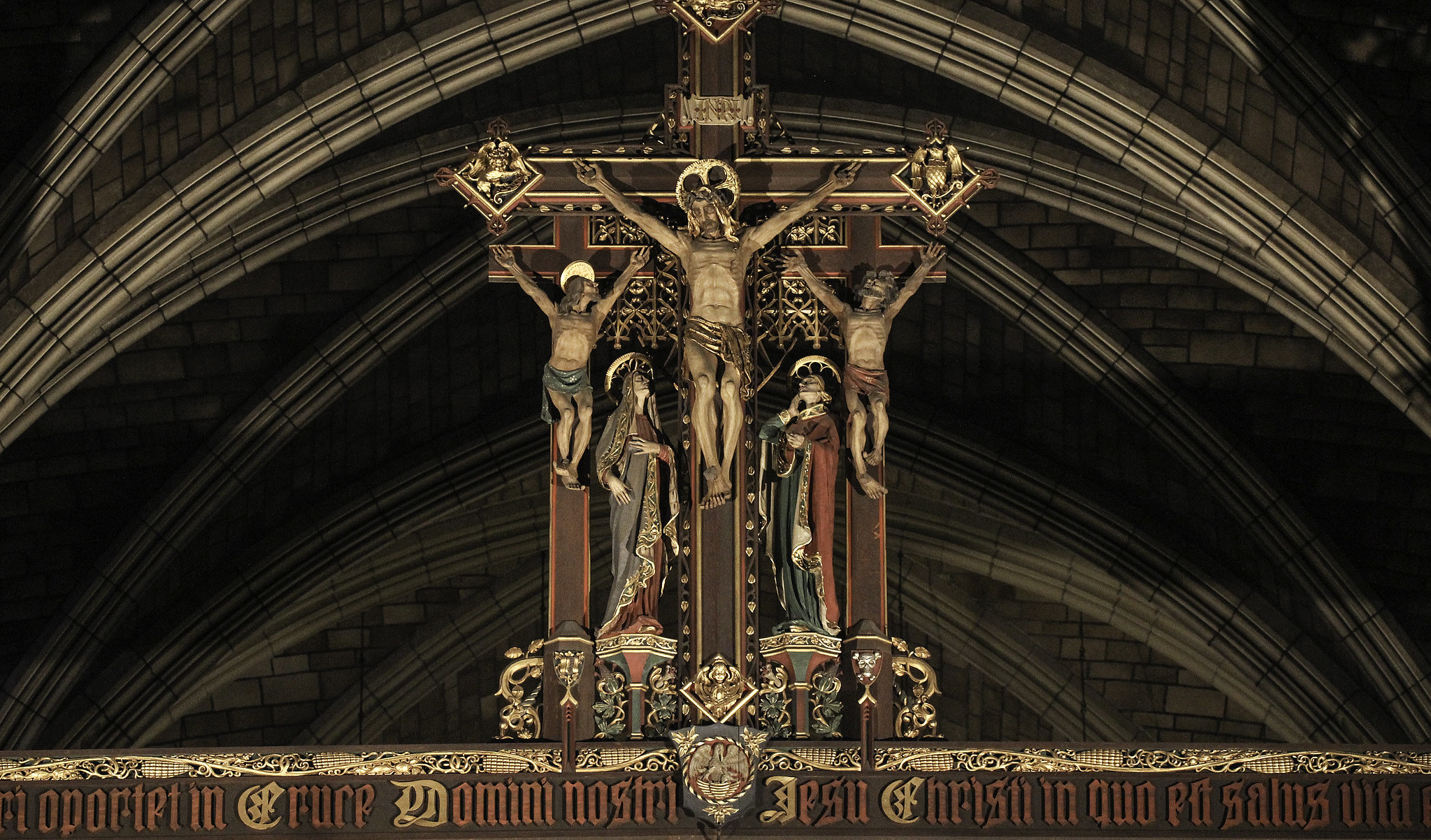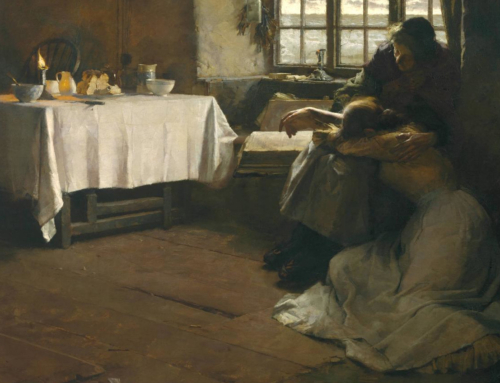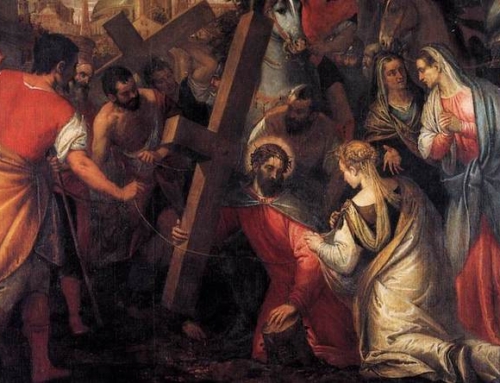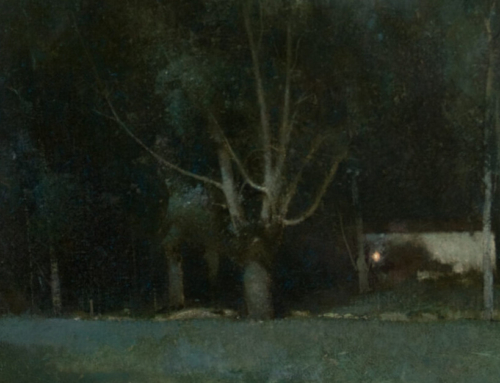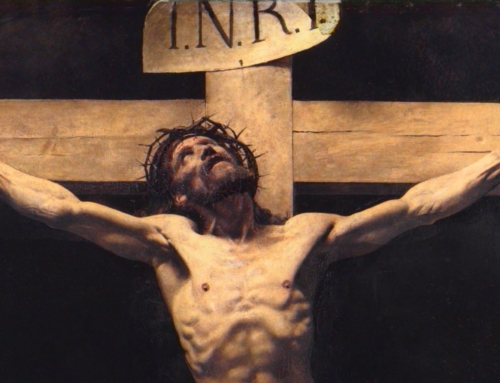2021 Rosary Series: The Sorrowful Mysteries
To commemorate the 450th anniversary of the Battle of Lepanto, we wish once again to promote this powerful devotion. This month, each Friday post will be dedicated to one of the Rosary’s four sets of mysteries in the hope that they will bear fruit for those who practice this beautiful devotion.
Meditating with Mary on the Passion of her Son is an engagement with the pinnacle of all Christian paradox: God and man, power and weakness, life and death, salvation and condemnation—all simultaneously present in the crucified Lord. It takes two sets of eyes to apprehend the whole picture. The eyes of the body perceive on Calvary the paragon of failure: a pitifully weak man condemned to an imperial death. The eyes of faith behold on Calvary the quintessential supernatural success: God, in his infinite power, offering his life for our eternal salvation. The Christian life is a pursuit of integrating these two lenses into a single high-definition vision of reality.
The Sorrowful Mysteries of the Rosary plunge us into this paradox and help us to know and love its instantiation in our own lives. For the cross is not something far from us—something which Jesus did a long time ago and in which we are to have no share. No, if any man would come after me, let him deny himself and take up his cross daily and follow me (Luke 9:23).
Mary’s share in this cross is a pattern for ours. She was closest to the action and cut—pierced (Luke 2:35)—to the quick, left helpless to watch her Little One suffer an unjust conviction and savage execution. Mary perceived all of these things with her eyes, and they were horrific. She also beheld them in faith, and they were good—not in themselves, but because they were the means God chose to effect a cosmic inversion. When I am lifted up, I will draw all things to myself (John 12:32). Had the stabat mater spoken, she might have repeated Peter’s words on Tabor: Lord, it is good that we are here (Matthew 17:4).
Suffering and sorrow remain present all around us. Some we inflict upon ourselves; some are inflicted upon us by others; and still other suffering—like a terminal diagnosis, a freak accident, a shocking tragedy—seems to come out of thin air. The sorrow of Calvary reminds us that none of this is an accident. On the night before he died, Jesus knew exactly what he was doing: With desire, I have desired to eat this pasch with you, before I suffer (Luke 22:15). In us, his members, Jesus knows exactly what he is doing. So attests Saint Paul: And therefore I suffer as I do. But I am not ashamed, for I know whom I have believed (2 Tim 1:12).
Saint Paul’s strange love for his sufferings is not unique among the saints. In fact, it is their hallmark: They love the Passion, including their own. But that cruciform joy does not come at once. Like their Head, they must learn obedience by what [they] suffer (Heb 5:8). Only thus are they perfected as Christ’s co-workers (Mark 16:20), satisfying with him for their sins and those of others. Saint John Paul II, who died a master sufferer, once reflected: “as an adolescent, I was above all intimidated by human suffering . . . . I was afraid to approach those who were ill: I felt a sort of remorse when confronted with this suffering which I had been spared” (Be Not Afraid!, 83). In the maturity of his pontificate, he would behold suffering as a “sign of election and vocation, engendering that inner peace and even that joy which come to a man when he discovers . . . the name by which God calls him” (ibid, 26). He would later write on that theme in Salvifici Doloris, and he would live it through his last days.
We obtain what the Sorrowful Mysteries promise by imitating what they contain. This ultimately demands that we, too, come to love our sufferings—not because they are good in themselves, which they are not, but because they have been swooped up under the shadow of [his] wings, in which we rejoice (Ps 63:8). Divine victory is realized in us precisely in our configurement to the disfigurement of God. This is Emmanuel’s work in us, with us.
To meditate on the Sorrowful Mysteries with the standing mother and her companions—with John, Mary Magdalene, and the other women, with Simon of Cyrene, the Good Thief, and the Centurion—is to come to know and to love the goodness of Good Friday. It is also to pray for the grace to behold the goodness of our own Good Friday, whenever and however it should come. For it is precisely in the darkness of such sorrows that we, ourselves repentant, will hear the words: Truly, this day you shall be with me in paradise (Luke 23:44).
✠
Photo by Fr. Lawrence Lew, O.P. (used with permission)

